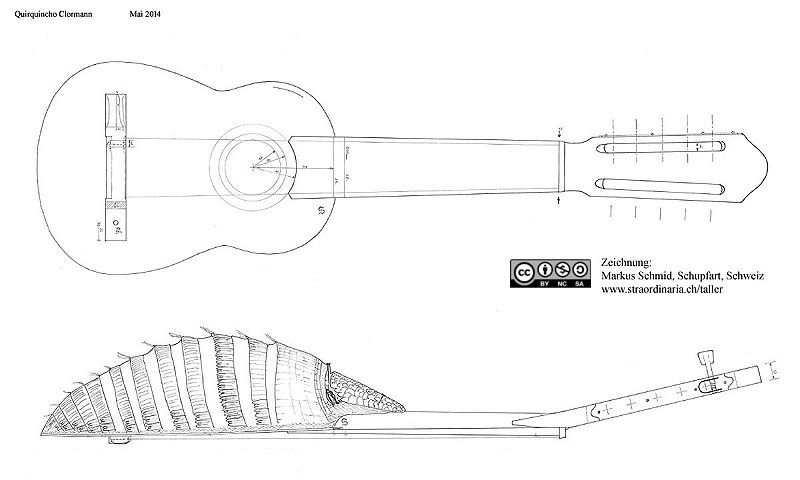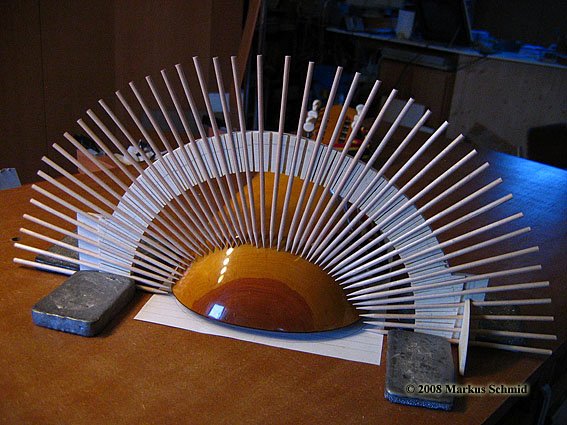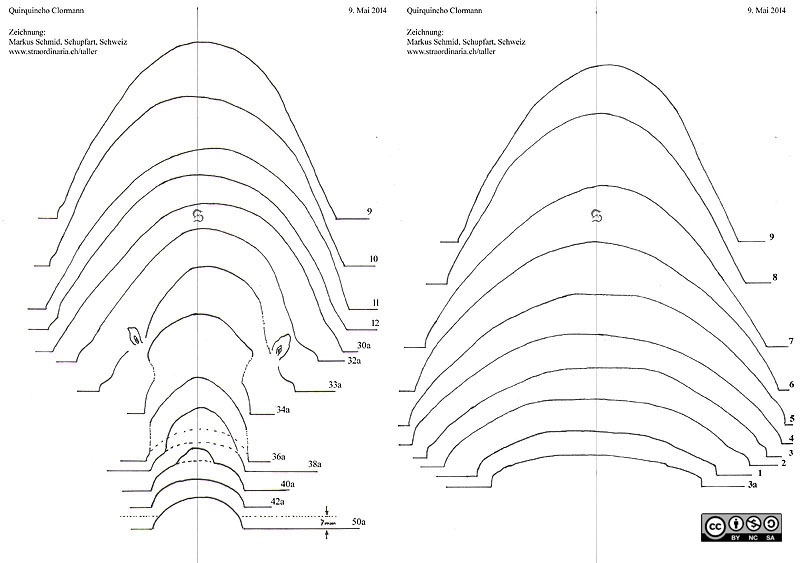I made this first ink drawing of a charango made of an armadillo (quirquincho or khirkinchu in indigenous Quechua language of the Andes). I have not come across to more than three or maybe four very well sounding armadillo charangos, which has nothing to do with the material used but rather with craftsmanship. As such well sounding armadillo charangos are that seldom, thus remarkable, it was easy to choose which charango drawings to convert into ink drawings first. Of course, the meaning is not to hunt down an armadillo which suits these charango plans, but with the data provided it should be possible to make a wooden charango of the same specs. The armadillo shell was around 2.5 mm thick, a wooden bowl should be between 6.0 mm and 2.0 mm thin, depending on the type of wood used, near the neck the bowl should be between 8 - 12 mm thick, also depending on the wood species. However, I won't go here into the details of carving the bowl.
The top of this charango was somewhat special, as it has no struts at all, just two harmonic bars, one below the soundhole, and another transverse bar beneath the fingerboard. At a general top thickness of about 2 to 2.5 mm And a lower bout width of 200 mm it still surprised me that the to did not show a single sign of giving in, although I have to say that the top is heavily domed (the center of the top is 3 mm higher than the lower bout borders, which translates into a 1670 mm radius! at the moment the plan is insofar incomplete as it does not clearly reflect the top doming. Maybe I'll update the plan further down the track.
The top is held on the shell via 13 irregularly spaced triangular consoles inside the body, and outside with the for this kind of charango typical, here relatively sparingly applied glue and wood dust mixture.
The drawings include two sheets containing a set of cross section outlines I drew with this apparatus:
The repair story of this charango is a saga on its own, maybe I'll open a separate thread about it once I'll have recovered all the photos I took during the process. Although the owner believes to remember that this instrument was brought to Switherland about 40 years ago, I suppose that this charango was built around 1990. One strong hint it may not be older is that the fingerboard and many other parts seemed to be glued on with foamy polyurethane glue (and yes, part of the repair was replacing the fingerboard!).
Click on the following picture of the plan to download the whole set of drawings plus some additional photos of the rosette, bridge, top doming and other details (zip file, ca. 1.3 MB)


